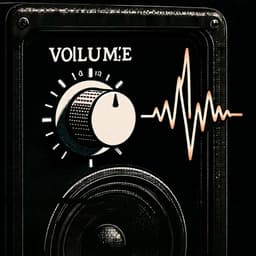You are very handsome
in SpanishEres muy guapo
/EH-ress mwee GWAH-poh/
This is the most common and direct way to call a man handsome. It's informal because it uses 'eres' (the 'tú' form), so it's perfect for partners, friends, or people your age.

A simple compliment like 'Eres muy guapo' can be a great way to connect with someone in a friendly, positive way.
💬Other Ways to Say It
Estás muy guapo
/ehs-TAHS mwee GWAH-poh/
This means 'You look very handsome' right now. It uses 'estar' ('estás'), which points to a temporary state or appearance, like how someone looks today or in a specific outfit.
Usted es muy guapo
/oos-TED ess mwee GWAH-poh/
This is the formal version, using 'usted es'. It's grammatically correct but can sound a bit stiff or overly respectful for a personal compliment.
Eres hermoso
/EH-ress ehr-MOH-soh/
'Hermoso' is a step up from 'guapo'. It translates to 'beautiful' or 'gorgeous' and carries a much deeper, more emotional weight. It's more poetic and intense.
Eres muy lindo
/EH-ress mwee LEEN-doh/
In Latin America, 'lindo' is extremely common and means 'handsome' or 'pretty'. It can also describe someone's personality as 'sweet' or 'nice'. In Spain, it's used more for things than people.
Sos muy fachero
/soss mwee fah-CHEH-roh/
This is the go-to slang in the Río de la Plata region for 'handsome' or 'good-looking'. 'Fachero' comes from 'facha', meaning one's appearance or 'look'. 'Sos' is the regional form of 'eres'.
Estás muy chulo
/ehs-TAHS mwee CHOO-loh/
In Mexico, 'chulo' means handsome or cute. In Spain, it can mean 'cool' or 'cocky', but also 'handsome'. It's very informal slang.
Estás bueno
/ehs-TAHS BWEH-noh/
This is a very direct and often sexually charged compliment, translating to 'You're hot' or 'You have a great body'. It focuses purely on physical attractiveness.
Eres bien parecido
/EH-ress byehn pah-reh-SEE-doh/
This literally means 'well-featured' or 'well-formed', and is a more mature and classic way to say 'good-looking'. It's less effusive than 'guapo' or 'hermoso'.
Eres un bombón
/EH-ress oon bohm-BOHN/
Literally 'You're a bonbon (a type of chocolate)'. This is a playful, flirty way to call someone a 'hottie' or 'a total snack'.
Estás como quieres
/ehs-TAHS KOH-moh KYEH-ress/
A very colloquial and flirty phrase that translates roughly to 'You're just how I like 'em' or 'You're looking fine'. It's very direct and complimentary of someone's physique.
🔑Key Words
Key Words to learn:
📊Quick Comparison
Choosing the right word for 'handsome' depends on intensity, context, and what you want to emphasize. Here's a quick comparison:
| Phrase | Formality | Best For | Avoid When |
|---|---|---|---|
| Eres/Estás guapo | Informal/Neutral | A standard, all-purpose compliment for friends, acquaintances, or partners. | In very formal situations where a personal compliment might be awkward. |
| Eres hermoso | Romantic | Expressing deep affection and admiration to a romantic partner. | Talking to anyone who is not your significant other; it's too intense. |
| Eres lindo | Informal | A warm, sweet compliment in Latin America, good for friends and romantic interests. | In Spain, where it's more commonly used for objects or children. |
| Estás bueno | Very Informal | Flirting heavily or with a long-term partner; it's about raw physical attraction. | With strangers, colleagues, or anyone you don't want to potentially offend. It can be vulgar. |
📈Difficulty Level
The 'g' in 'guapo' is soft, and the vowels are pure, but overall it's not difficult for English speakers.
The distinction between 'ser' (eres) and 'estar' (estás) requires practice, as does remembering to make the adjective masculine ('-o').
Choosing the right word (guapo, lindo, hermoso, fachero) and judging the appropriateness of the compliment requires significant cultural awareness.
Key Challenges:
- The Ser vs. Estar distinction
- Remembering to use the masculine adjective ending '-o'
- Knowing which regional slang is appropriate
💡Examples in Action
Mi amor, te ves cansado pero sigues siendo muy guapo.
My love, you look tired but you're still very handsome.
¡Wow, Carlos! Qué guapo estás con ese esmoquin. ¡Vas a ser el centro de atención en la boda!
Wow, Carlos! You look so handsome in that tuxedo. You're going to be the center of attention at the wedding!
Che, Nico, con esa remera nueva estás re fachero, ¿sabés?
Hey, Nico, you look really handsome in that new t-shirt, you know?
Con todo respeto, su hijo es un joven muy bien parecido.
With all due respect, your son is a very good-looking young man.
🌍Cultural Context
The 'Ser' vs. 'Estar' Distinction
One of the trickiest but most important concepts is using the right verb. 'Eres guapo' (using 'ser') means you are inherently a handsome person—it's part of who you are. 'Estás guapo' (using 'estar') means you look handsome *right now*, perhaps because of your clothes or how you styled your hair. The second one is often a more common and safer compliment to give.
Adjectives Must Agree
In Spanish, adjectives must match the gender of the noun they describe. When complimenting a man, always use the masculine form ending in '-o' (guapo, hermoso, lindo). Using the feminine '-a' form (guapa, hermosa, linda) would be a clear mistake and sound very strange.
Directness and Context
Spanish-speaking cultures can be very warm and expressive, and compliments between friends and partners are common. However, complimenting a stranger's appearance can be perceived differently depending on the country and context. Phrases like 'estás bueno' are very direct and can be seen as vulgar if used inappropriately.
Regional Slang is King
While 'guapo' is understood everywhere, using local slang will make you sound much more natural. Calling an Argentine 'fachero' or a Colombian 'churro' shows you've made an effort to connect with their specific culture and will likely be very well-received.
❌ Common Pitfalls
Using 'Caliente' for 'Hot'
Mistake: "Saying 'Eres muy caliente' to mean 'You're very hot/attractive'."
Correction: Use 'Estás bueno/a' (cautiously) or 'Eres muy guapo/a'.
Forgetting Gender Agreement
Mistake: "Telling a man, 'Eres muy guapa'."
Correction: Eres muy guapo.
Mixing Up 'Ser' and 'Estar'
Mistake: "Saying 'Eres muy guapo con esa corbata' (You are handsome with that tie)."
Correction: Estás muy guapo con esa corbata.
Using 'Bonito' for a Man
Mistake: "Calling a grown man 'bonito'."
Correction: Use 'guapo', 'lindo', or 'hermoso'.
💡Pro Tips
Start with 'Qué' for Emphasis
A very natural way to give a compliment is to start with '¡Qué...!' (How...!). For example, '¡Qué guapo estás!' means 'How handsome you look!' It's a common, emphatic way to express the sentiment.
Read the Room
Pay attention to your relationship with the person. A romantic compliment like 'eres hermoso' is perfect for a partner but strange for a coworker. A casual slang term like 'fachero' is great for a friend but too informal for your friend's grandfather.
Combine with Another Compliment
To make your compliment feel more sincere and less focused only on looks, you can add a comment about their personality. For example, 'Además de ser tan guapo, eres muy inteligente' (Besides being so handsome, you're very smart).
🗺️Regional Variations
Spain
'Guapo' is the undisputed king of compliments for men here. 'Majo' is also extremely common but is a mix of attractive, nice, and cool. 'Lindo' is rarely used for men.
Mexico
'Chulo' is a very common and friendly slang term for handsome. 'Guapo' is also used frequently. Compliments can be quite direct and are a common part of social interaction.
Argentina
'Fachero' is by far the most common and natural way to call a man handsome in casual conversation. Using 'guapo' is fine, but 'fachero' shows you know the local lingo. The use of 'vos' is essential to sound authentic.
Colombia
'Churro' is a very popular and endearing term for a handsome man. 'Papacito' is also extremely common, though it's more explicitly flirty and can be used as a catcall, so context is key.
💬What Comes Next?
After you compliment them
Gracias, qué amable.
Thank you, how kind.
De nada, es la verdad.
You're welcome, it's the truth.
They return the compliment
Tú también estás muy guapa/guapo.
You look very beautiful/handsome too.
Ay, gracias.
Aw, thanks.
They act shy or deflect the compliment
No digas eso...
Don't say that...
¡Pero es cierto!
But it's true!
🧠Memory Tricks
This silly visual connects the sound of the word to a memorable image, making it easier to recall.
This links the sound of the word to a concept (a model) that embodies the meaning of 'beautiful' or 'gorgeous'.
🔄How It Differs from English
The biggest difference is the required use of two different verbs, 'ser' and 'estar', to distinguish between a permanent trait ('Eres guapo') and a temporary state ('Estás guapo'). English uses 'to be' for both, relying on context. Additionally, Spanish adjectives must change their ending to match the gender of the person ('guapo' for men, 'guapa' for women), a concept that doesn't exist in English.
False Friends & Common Confusions:
Why it's different: A direct translation, 'Estás caliente', means you are sexually aroused, not physically attractive. This is one of the most common and dangerous 'false friends' for English speakers.
Use instead: To convey 'you're hot', use a phrase like 'Estás bueno/a' or the less direct 'Eres muy atractivo/a'.
🎬In Popular Culture
Guapo
by Fito & Fitipaldis
In the lyrics, the singer is describing himself in a self-deprecating way, listing things he is not, and 'guapo' (handsome) is one of them.
Why it matters: This shows how 'guapo' is a fundamental, everyday descriptive word in Spanish, particularly in Spain where the band is from. It's the default term for 'handsome'.
La Reina del Sur
A character is speaking to a powerful man, acknowledging his long-standing physical attractiveness but noting how power has changed him.
Why it matters: This example shows 'guapo' used in a more serious, dramatic context to describe an inherent quality ('siempre has sido' - you have always been), demonstrating the use of 'ser' for a permanent characteristic.
🎯Your Learning Path
✏️Test Your Knowledge
💡 Quick Quiz: You are very handsome
Question 1 of 4
You see your friend Miguel, who dressed up in a new suit for a party. How would you compliment his appearance *tonight*?
Frequently Asked Questions
What's the real difference between 'guapo', 'hermoso', and 'lindo'?
'Guapo' is the standard, all-purpose word for 'handsome'. 'Hermoso' is much stronger, like 'gorgeous' or 'beautiful', and is usually reserved for romantic partners. 'Lindo' is common in Latin America and is a softer term, like 'handsome' or 'cute', and can also refer to a nice personality.
Is it okay to call a male friend 'guapo'?
Yes, absolutely! In most Spanish-speaking cultures, it's very normal for friends to compliment each other's appearance. Saying '¡Qué guapo estás hoy!' (You look so handsome today!) to a friend who has dressed up is a common and friendly gesture.
How do I say 'you LOOK handsome' instead of 'you ARE handsome'?
This is the classic 'ser' vs. 'estar' difference. To say 'you LOOK handsome' (referring to their current state), use 'estar': 'Estás muy guapo'. To say 'you ARE handsome' (referring to their inherent quality), use 'ser': 'Eres muy guapo'.
Can I use 'bonito' to describe a man?
It's generally best to avoid it for adult men. 'Bonito' means 'pretty' and is most often used for things, babies, children, and sometimes women. Calling a grown man 'bonito' can sound a bit strange or condescending, as if you're calling him 'cutesy'.
What if I accidentally say 'estás caliente'?
If you say it by mistake, the best thing to do is correct yourself immediately with a laugh. You could say, '¡Ay, no! Quise decir 'guapo', lo siento. ¡Un error de principiante!' (Oh, no! I meant to say 'handsome', I'm sorry. A beginner's mistake!). Most people will understand and find it funny.
Do I always have to say 'muy' (very)?
No, you don't. Simply saying 'Eres guapo' or 'Estás guapo' is a perfectly fine compliment. Adding 'muy' just adds emphasis. You can also use other intensifiers like 'tan' ('Eres tan guapo' - You're so handsome) or 'súper' ('Estás súper guapo').
📚Continue Learning Spanish Phrases
Explore More Phrases in These Categories
Find similar phrases to expand your Spanish vocabulary:
Want to Learn More Spanish Phrases?
Browse our complete collection of Spanish phrases organized by situation, from basic greetings to advanced conversations. Perfect for travelers, students, and anyone learning Spanish.
View All Spanish Phrases →



